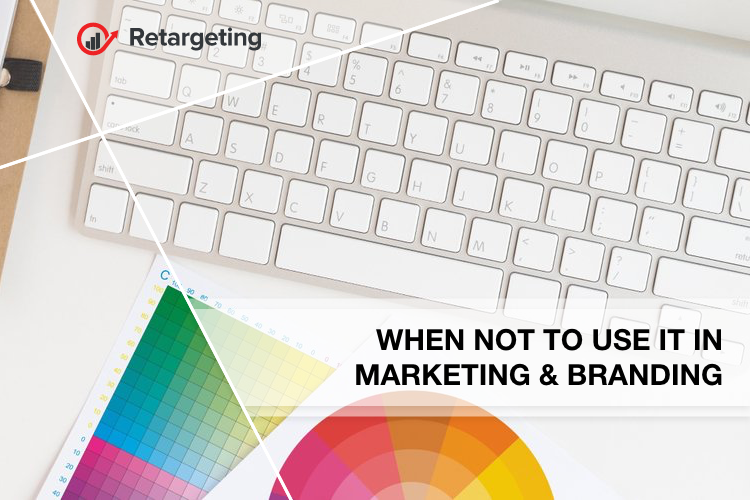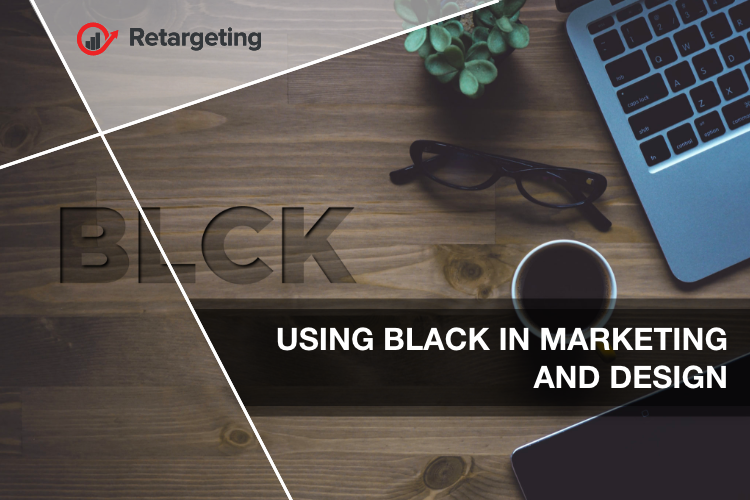Color can often speak louder than words. It’s the first thing you notice about design, it evokes immediate emotion and sets the tone for all other supporting elements. Understanding and implementing black color psychology in your marketing and design can change behavior. This is no more true than with, arguably, the strongest color there is black.
In general, using this color in design can greatly impact your efforts in gaining your user’s attention. You just want to be sure this impact is always as you intend and that it enhances your overall message.
1. Black as a neutral
Black is a neutral color, which is often used to “stabilize” or subdue more vibrant colors that run the risk of being overpowering. Because of these properties, it can feel very powerful. It can also be associated with being elegant, formal, slick, modern, or luxurious.
The high contrast that black provides, allows certain page elements such as backgrounds to recede. This way the user’s focus can remain on product photos without the overall layout seeming fussy or overdone.
Using this color in support of additional elements can exude elegance, while too much of it can be outright grim and uninviting. So, how should you use black?
2. Black in marketing and branding
Black is most regarded for its very functional design aesthetic. It’s often used in situations where high-contrast and legibility are the most important factors.
This is why most word processors default to black text on a white page. And also why luxury brands keep their visual identities simple, yet extremely bold.
Unlike some more connotational colors like orange or red, black is versatile making it applicable to a variety of different industries.
3. The color black psychology and conversion rates
Color is arguably the most important element when constructing calls-to-action (CTAs). They exist to draw the user’s attention within automated facebook ads campaigns or other types of online marketing channels and convince them to perform the desired action. The best way to do this with color is to make sure you choose one that contrasts any other element on the page.
Black is an easy go-to color to accomplish this because of its ability to provide high-contrast with a large majority of colors. While it isn’t appropriate to use in every situation, it is a quick way to draw attention to a clickable action on a page.

4. When not to use it in marketing & branding
We’ve highlighted some excellent examples of the most effective ways to use black in design. But there are times when it simply isn’t appropriate.
5. In already dark design
Specifically dark backgrounds can reduce readability. If you are planning to utilize light text on a black background, provide plenty of white space and make sure your text size is appropriate given the font style.
Applying the color to every element on a page will call attention to everything, and therefore nothing. Reserve it for section backgrounds, important text, or bottom of the funnel calls-to-action, but do not utilize all of these elements in black in the same section.
6. In particular industries
There are specific industries that often utilize black to communicate the raw emotion that the color often evokes, but others may want to be careful to completely avoid large doses of the color. For example, black would be perceived with negative emotions in the wedding dress industry.
7. With particular audiences
Similar to use in certain industries, black may not be appropriate with particular audiences. Again, it is the color of mourning in many cultures. If not used strategically, this sentiment could be evoked with audiences that know of the color in that context.
8. Black color psychology and emotions it conveys
While black can be an asset to the emotion your brand wants to convey, you’ll want to be careful when utilizing the color in your designs.
- Pairing: Be mindful of its pairings with other colors. While black can help enhance colors it’s paired with, sometimes that contrast can be too effective. Take black and orange, for example, not only are you going to get some spooky Halloween vibes for many individuals but when these two colors are paired together, they make the other brighter and more prominent.
- Strategy: Think about how you’d like to use black. Will it be a primary color in your design or simply an accent? Depending on your usage you’ll want to take care in how you use other elements in the design. Notably, whitespace and typography will need to be treated much differently depending on your usage of black.
- Competitors: How are your competitors utilizing the color and what type of emotion does it evoke? Taking their color usage into account can help determine how you may be perceived and if you’ll stand out. Our brains prefer immediately recognizable brands, and the color is a primary component of creating a brand identity. Depending on how you want to position yourself against direct competitors, you may want to deviate entirely or conform to their color usage.

